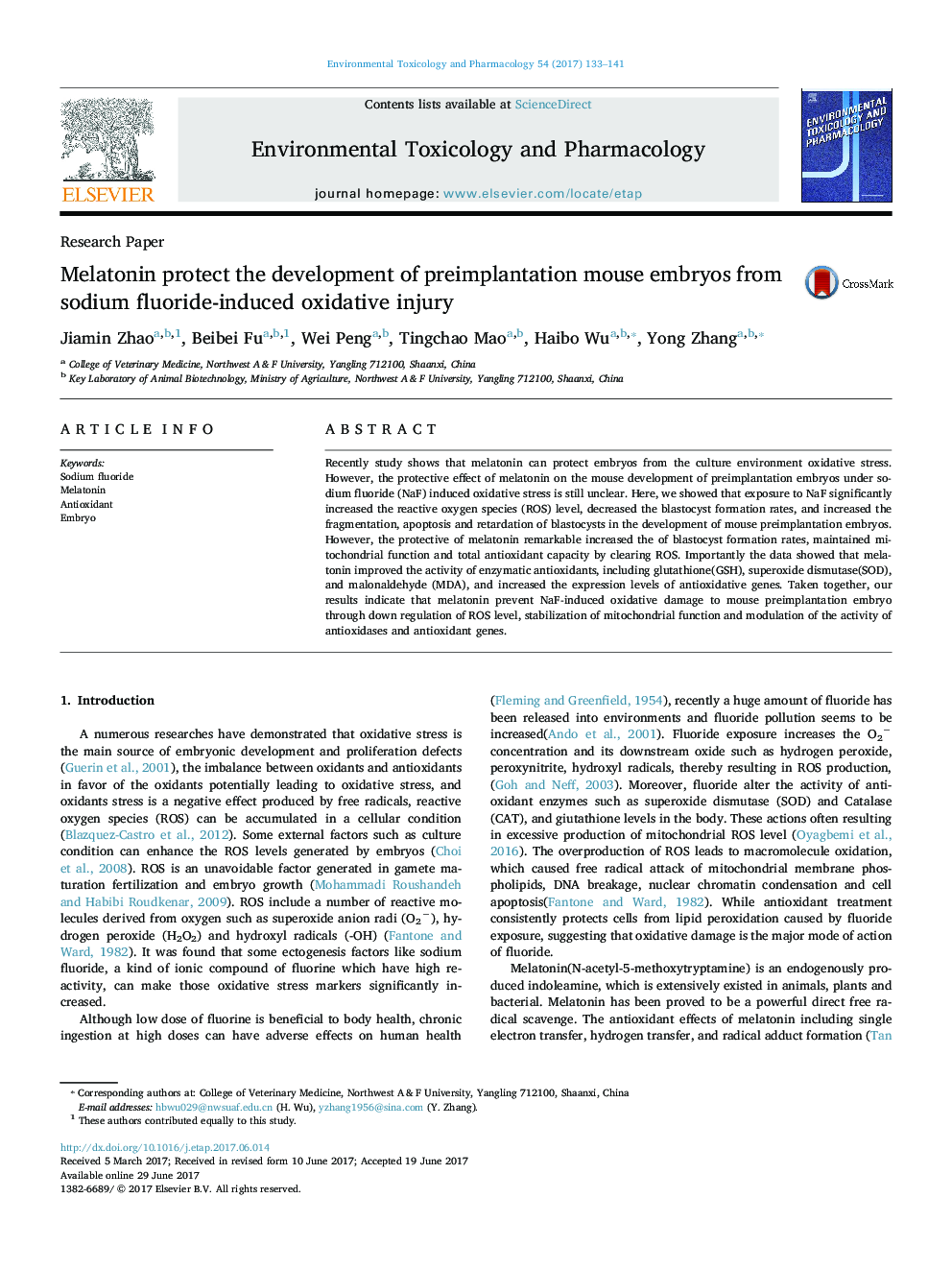| Article ID | Journal | Published Year | Pages | File Type |
|---|---|---|---|---|
| 5559749 | Environmental Toxicology and Pharmacology | 2017 | 9 Pages |
â¢NaF significantly induce the oxidative injury in oocytes hence decrease the maturation rate.â¢Oxidative damage in the early stage of oocyte will continue until maturity.â¢Melatonin has obvious protective effect on deducing oxidative injury.
Recently study shows that melatonin can protect embryos from the culture environment oxidative stress. However, the protective effect of melatonin on the mouse development of preimplantation embryos under sodium fluoride (NaF) induced oxidative stress is still unclear. Here, we showed that exposure to NaF significantly increased the reactive oxygen species (ROS) level, decreased the blastocyst formation rates, and increased the fragmentation, apoptosis and retardation of blastocysts in the development of mouse preimplantation embryos. However, the protective of melatonin remarkable increased the of blastocyst formation rates, maintained mitochondrial function and total antioxidant capacity by clearing ROS. Importantly the data showed that melatonin improved the activity of enzymatic antioxidants, including glutathione(GSH), superoxide dismutase(SOD), and malonaldehyde (MDA), and increased the expression levels of antioxidative genes. Taken together, our results indicate that melatonin prevent NaF-induced oxidative damage to mouse preimplantation embryo through down regulation of ROS level, stabilization of mitochondrial function and modulation of the activity of antioxidases and antioxidant genes.
Graphical abstractModel of melatonin protect mouse embryo from NaF-induced oxidative stress. Melatonin maintained mitochondrial function and scavenge antioxidative enzyme and gene by clearing ROS. Thereby improving embryo quality and the rate of development in vitro.Download high-res image (96KB)Download full-size image
